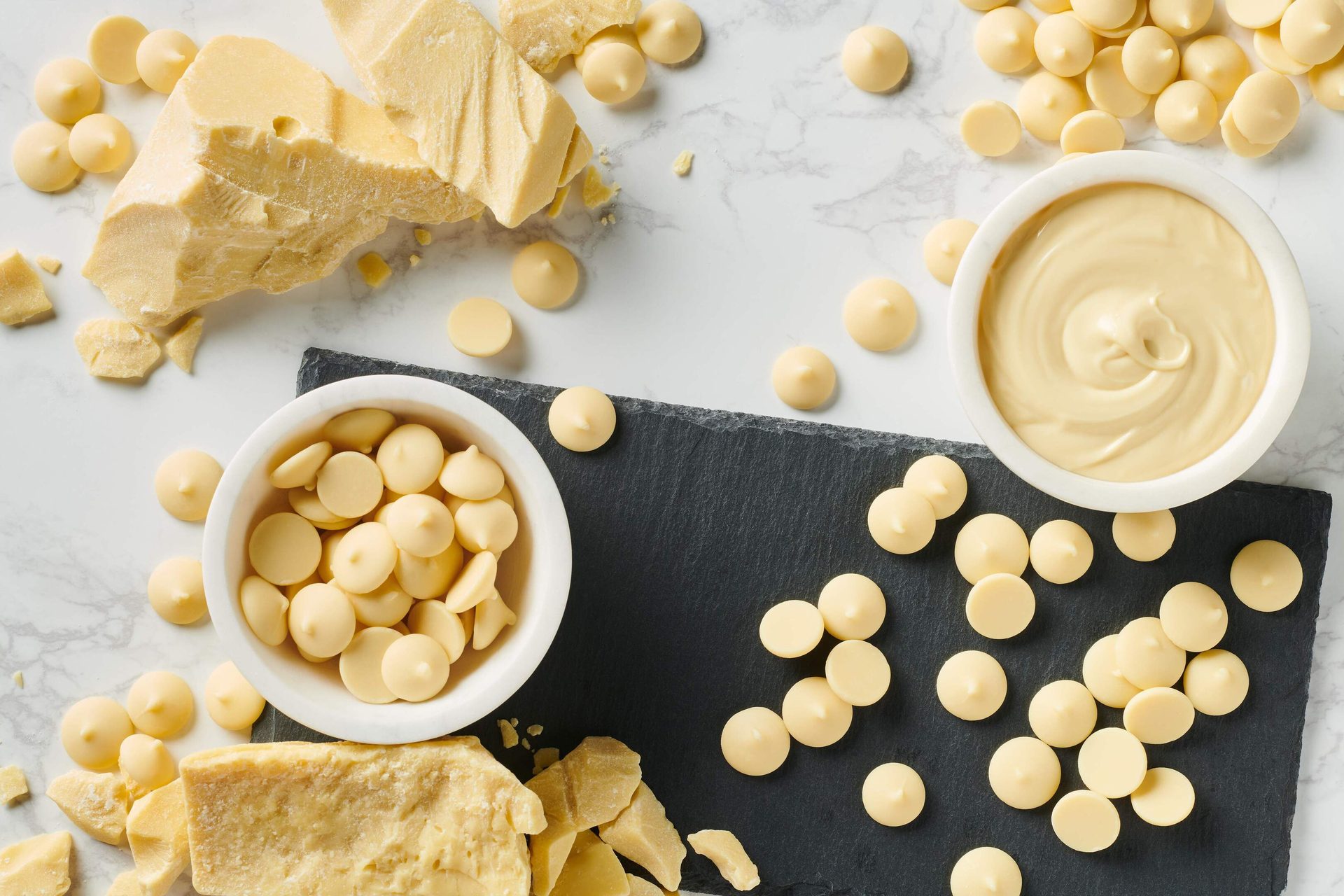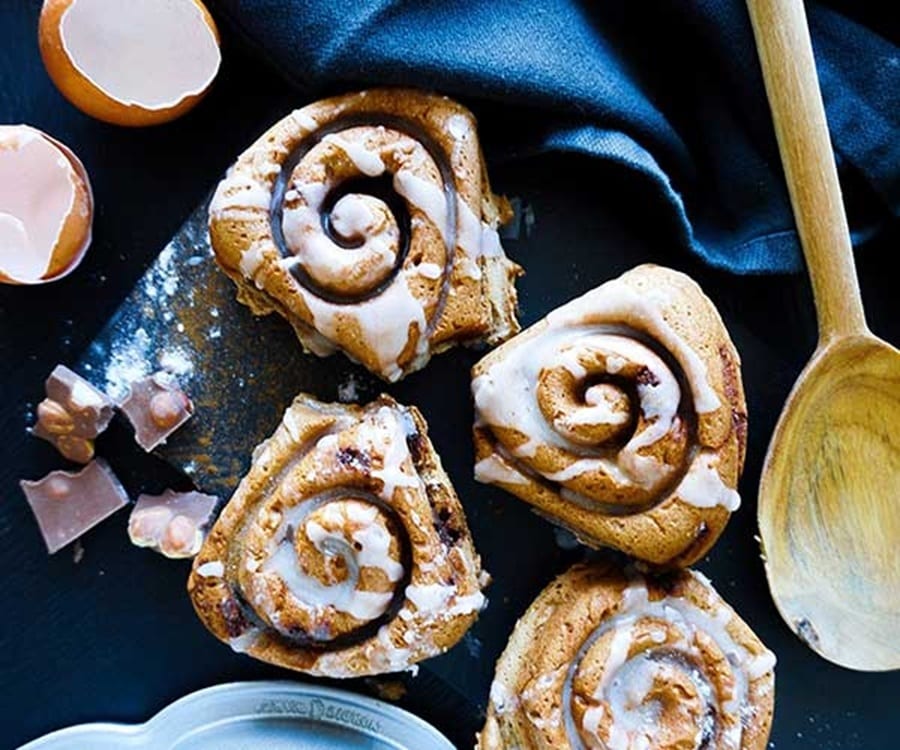Nuts and inclusions
INGREDIENTS
The BOTTOM LINE
- Inclusions can elevate a snacking experience by enhancing texture
- Consumers want a balance of indulgence and health
- Sustainability can be a consideration when considering such ingredients.
Sense and sensibility
Inclusions in snack and bakery products need to offer good taste, texture, health, and more.
Jenni Spinner, Chief Editor
Crunchy, chewy, crispy—inclusions can add dimensions to a snacker’s experience when they are eating a snack or baked treat by adding texture and variety. However, that is not the only role those ingredients can play. Consumers demand a lot of their food buys these days, and inclusions offer myriad ways for producers to meet those high expectations.
Ingredient trends
Several consumer interests impact trends in products incorporating nuts and other inclusions, including:
- Sensory adventure: Whether it’s crunchy nuts, chewy boba pearls, or other textured items, inclusions can provide appealing contrast to the base.
- Healthy appeal: Consumers are keenly interested in better-for-you snacking, which extends to nuts, chips, fruits, and other inclusions in a treat.
- Functional foods: With snackers looking for fiber boosts, protein enrichment, and other attributes, inclusions can add these benefits.
- Global flair: Increasingly adventurous shoppers across demographics are responding to pepitas, exotic fruits, and other novel ingredients.
- Premium bites: Snacks and bakery items offer affordable indulgence; higher-end inclusions like macadamia nuts or Belgian chocolate chunks can elevate them.
- Responsible snacking: Inclusions that are sustainably grown, ethically sourced, or have another sort of “halo” can appeal to many consumers.


Courtesy of Cargill
Inclusion insights
The chips, hunks, bits, and other shapes of inclusions in a snack product or bakery item can impact consumer perception and experience in a number of ways, according to Sheila McWilliams, technical sales manager with Fiberstar.
“Bakery inclusions add visual appeal and may enhance the flavor of bakery products, like the addition of sprinkles or chocolate chips,” she says. “Consumer preference is based on eye appeal, texture, diet restrictions, and nutritional consideration.”
Max Maxwell, market intelligence manager with Glanbia Nutritionals, says appealing texture is an important consideration when designing or reformulating items.
“There is something uniquely special about foods that crunch: they engage an additional sense that lets us ‘eat with our ears,’” he observes. “Sound provides heightened engagement with the food that can lead to a more satisfying eating experience. Adding some crunch to a product is a simple way to appeal to consumers, but it also elevates the eating occasion for all consumers by providing an engaging multisensory experience.”
Katie Knapp, senior technical services specialist with Cargill, says that with BFY benefits being important to most shoppers, inclusions can help add those health aspects to a baked good or snack.
“Consumers are increasingly interested in snacks that balance indulgence with health,” Knapp says. “The health halo associated with dark chocolate lets brands tap into this dual-edged desire. Protein- or fiber-fortified compound inclusions offer another way to combine chocolatey indulgence with the nutritional benefits many consumers actively seek.”


Courtesy of Icon Foods
Glanbia’s Senior Director of Product Strategic Management Ashley Bacchiarello concurs.
“Protein-rich inclusions are a standout, particularly as shoppers seek snacks that support active lifestyles, weight management and satiety,” she notes. “At the same time, clean-label expectations remain high. Consumers want inclusions made with recognizable, minimally processed ingredients. Additionally, inclusions that offer functional benefits, such as fiber and protein, are highly sought after.”
Seema Kedia, senior manager of strategic marketing for Ocean Spray Ingredients, says natural fruits have been a common inclusion in products, with some of those benefits offering continued appeal to an ever-more health-conscious populace.
“This trend is especially prominent in categories like snacks and baked goods, where shoppers are actively seeking wholesome, recognizable components such as dried fruits, she says. “Among these, sweetened dried cranberries stand out as a versatile choice. Not only do they offer a vibrant burst of bold flavor and natural color, but they also pair exceptionally well with other inclusions to create the exciting flavor combinations consumers crave. Whether blended with chili, ginger, citrus, or even savory ingredients, dried cranberries elevate taste profiles and add a dynamic twist to traditional recipes.”
Kash Rocheleau, CEO of Icon Foods, says consumers increasingly in the habit of scanning ingredients lists for artificial-sounding components are making natural inclusions a high priority for producers.
“Consumers are steering clear of inclusions that feel artificial, overly processed, or misaligned with their clean label expectations,” she advises. “Clean label is no longer a trend; it’s the expectation. Inclusions that lean natural, recognizable, and minimally processed are leading the way. Think real fruit pieces, nuts, seeds, and chocolate that doesn’t feel artificial or overly engineered.”
Julie Mates, national account manager with Parker Food Group, says pressure to phase out artificial colors is also an important priority.
“Artificial colors have been in the headlines lately, so consumers are paying more attention to that,” she states. “We've seen increasing requests for natural colors from our customers.”
Ravi Arora, director of sales and marketing at Global Organics, says it is up to inclusions suppliers to offer a range of solutions that address multiple demands.
“There seems to be an increased demand for healthier inclusions that also offer novel sensory and textural experiences as well as sustainability,” he states. “Nuts, seeds, desiccated coconut chiplets, and unsweetened dried fruits are increasingly being used. Even their preferences for chocolate chips and chunks are shifting towards darker chocolate, chocolate liquor chip,s and cocoa nibs. Caramel bits, especially salted caramel bits, can help to create interesting sensory experiences.”

Courtesy of Parker Food Group
Claire Piddington, global marketing manager for inclusions with IFF, says fruits remain a popular inclusion, more so with the accelerating interest in healthful eating.
“Inclusions must do more than taste good—they need to support the product’s nutritional and sensory profile,” she notes. “Fruit-based inclusions can help bridge this gap, but not all are created equal. Moisture management, bake stability, and shelf life remain common challenges, and these factors often separate premium solutions from commodity options.”
Product innovations
Despite challenges due to the volatile cocoa market, chocolate in its myriad forms remains one of the most in-demand inclusions. Knapp says Cargill offers a broad range to appeal to those sweet-toothed snackers.
“If a customer can dream it, we likely have it,” she boasts. Our inclusions range from milk, dark, and white chocolate chips, wafers, and chunks to compound drops in popular flavors like peanut butter, butterscotch, and cinnamon. We even have chocolate drops made with oats for vegan formulations. Available in a range of sizes, our inclusions are ideal for cookies, bars, muffins, snack mixe,s and similar snack and bakery items.”
Knapp adds the company also offers milk and dark chocolate-flavored compounds, which aim to deliver the taste and other appealing attributes of chocolate, at a lower price point: “Like our other inclusion offerings, they are well-suited to snack and bakery applications, including cookies, bars, muffins, snack mixes and more.”
Piddington says there are other ways inclusions can help mitigate cocoa cost considerations while still delivering pleasing taste, appealing texture, and other benefits.
“Pairing fruit with DANISCO GRINDSTED Carob Powder, for example, creates a chocolate-like experience with a distinctive, planet-friendly twist,” she says. “With cocoa prices at record highs and supply chains under strain, carob powder is a versatile alternative to cocoa, suitable for ice cream, beverages, baked goods, and chocolate-style coatings—all with optimal cost-in-use and label-friendly appeal.”
Rocheleau says with a significant portion of U.S. consumers looking to reduce sugar intake, low- or no-sugar inclusions offer ways to add sensory appeal, taste, and other benefits without turning off sugar-shunning snackers.

Courtesy of Parker Food Group
“Icon Foods SweetBitz inclusions deliver sweetness and texture without added sugar or excess calories that can come with traditional inclusions,” she shares. “The line includes white and dark chocolate–flavored chips in multiple sizes, flavored morsels, and colorful sprinkles. These inclusions are well suited for bars (snack, breakfast, and protein) as well as baked goods like cookies, muffin,s and cakes. They not only maintain the indulgent taste and mouthfeel consumers expect, but can also reduce water activity, helping extend shelf life.”
When incorporating different types of inclusions, Jennifer Stephens (vice president of marketing with Fiberstar) says producers should be mindful of the potential impact on the rest of the item and consider solutions that can help strike the right balance.
“Moisture migration in multi-component bakery products is always a concern; water will migrate between components with varying moisture contents,” she advises. “For example, moisture may migrate from a cranberry piece to the dough, making the inclusion hard and unpleasant to chew. Citri-Fi citrus fiber, an upcycled ingredient from the citrus juicing process, holds moisture in the fiber matrix to reduce the potential for water to migrate within a product containing inclusions.”
Walnuts are another popular inclusion; Jennifer Olmstead, senior director of U.S. marketing and communications with the California Walnut Board, says producers looking to incorporate the nuts in their product should consider a few things to make their inclusion pay off.
“Because walnuts have a naturally complex flavor profile, mild and slightly sweet, yet earthy and savory due to their oil content and tannins, they can influence how other ingredients come across,” she muses. “Sometimes this can mean sweet applications taste more rounded or savory, and savory applications take on subtle sweetness.”
One of the payoffs for walnuts, she states, is their nutrition benefits. “Research shows that replacing 15–20% of rice flour with walnut flour in gluten-free bread improves protein content, loaf volume, and crumb structure, while maintaining consumer-acceptable flavor. This makes walnut ingredients particularly interesting for better-for-you bakery formulations.”
Bacciarello says Glanbia Nutritionals offers a range of inclusion products aimed at helping deliver on customers’ multiple expectations.
“Crunchie High Protein Crisps are specifically designed for snack and bakery applications, offering plant- and dairy-based options ranging from 40-85% protein,” she shares. “They’re ideal for products like protein bars, cookies, and brownies, delivering a significant nutritional boost without compromising flavor thanks to their clean, neutral profile. They are available in a variety of customizable sizes and shapes for different applications. They also meet clean-label expectations with non-GMO, gluten-free, and soy-free options.”
Final thoughts
Nuts remain a popular inclusion in baked goods and snacks. Olmsted says one of the reasons why walnuts endure is their versatility and ability to pair well with other ingredients, like cocoa.
“The richness of cocoa pairs naturally with the crunch and subtle nuttiness of walnuts. For producers, this combination is a way to meet consumer demand for treats that feel both premium and purposeful, ensuring chocolate indulgence comes with a better-for-you story,” she says.”
“Clean label is no longer a trend; it’s the expectation.”
— Kash Rocheleau, CEO, Icon Foods

“Consumers are looking for healthier fats, such as those from coconut oil, olive oil, and avocado oil.”
— Jackie Steffey, senior customer innovation manager, AAK




